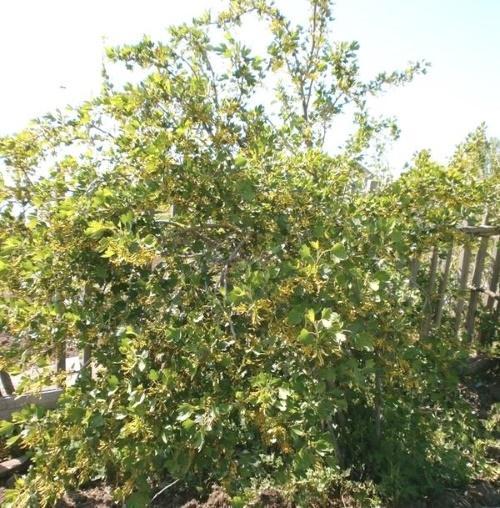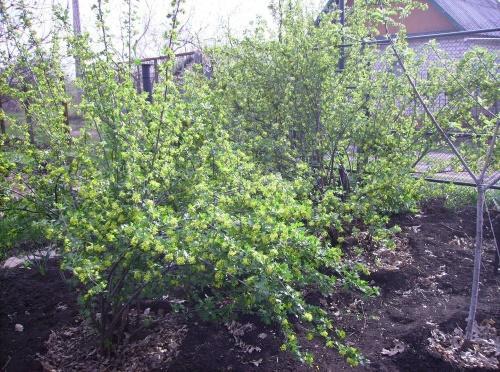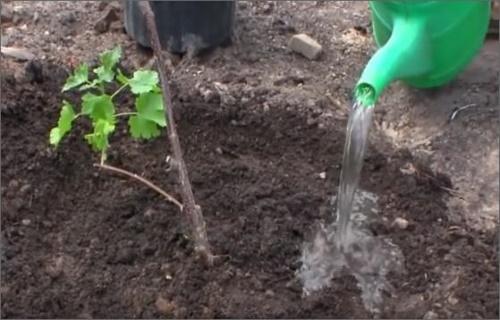Yoshta does not bear fruit: why it happens and what to do

Among gardeners, selective hybrid crops are gaining more and more popularity, which are characterized by improved positive qualities of parent plants. One of the most famous fruit and berry hybrids is yoshta with leaves like gooseberries and fruits like currants. Powerful bushes with an average height of about 2 m have absolutely no thorns, give little root growth and have stronger shoots, besides, they will delight with large black berries of a sweet and sour taste. Resistance to most parental diseases and frost is another advantage of the shrub. However, sometimes yoshta leaves gardeners perplexed: after planting a year passes, the second, and the berries are never seen. What could be the reason for this?
The reasons why yoshta does not bear fruit may be a violation of the recommendations for growing, namely:
- lack of pollination;
- lack of moisture;
- lack of food.
How to increase fruiting?
Generally yoshta - the plant is partially self-fertile. Its yellow inflorescences with a slight sweet scent attract insects, but sometimes this is not enough. If a shrub blooms, but there is no ovary or little, experienced gardeners advise to plant parent crops - currants and gooseberries - in its neighbors. This will improve the quality of pollination and, accordingly, yield.
Lack of moisture
One of the conditions for good development of the bush and fruiting is a sufficient level of moisture in the soil. It is especially important to regularly water the yoshta in the summer, when the air temperature is high and precipitation is rare. Pour at least three buckets of water under an adult plant and make sure that the ground under the bush does not dry out. If this happens, yoshta will not only grow poorly, but also bear fruit.
In order to avoid rapid evaporation of water, the trunk circle should be mulched with humus, moreover mulch will not give a chance to weeds and provide the shrub with nutrients.
Yoshta's nutritional problems
The hybrid has a strong temper and is able to survive almost everywhere. But if the purpose of planting is not only to get a decorative hedge, but also useful berries, the yoshta must be periodically fed.
Particular attention should be paid to the owners of plots with poor soil - it will be very difficult to achieve good fruiting there without fertilizing.
It is necessary to apply fertilizers under the bush during the entire growing season, namely:
- in spring - humus, compost;
- in summer - phosphate preparations;
- for the winter - potash fertilizers.
Adhering to the basics of proper yoshta care, you can feast on large and tasty berries over the next 20 years.
I strongly disagree with the article. At least - with regard to the Moscow region. I don’t know of a single gardener in the area who would not be disappointed in yoshta. Many have been tinkering with this culture for several years and all with zero result. So to all gardeners of the Moscow region who stepped into ... yoshta 😉 I recommend not to waste time on it and move out of the garden somewhere in the decorative plantings.
I have 2 bushes growing side by side. In a rainy summer, a good harvest, in a good summer, the berries dry out before they have time to ripen. The plot is sandy.
Your plant just doesn't have enough moisture. Therefore, in a dry hot summer, additional moisture is needed. Moreover, the soil is sandy.
My yoshta is 8 years old, only this year there were very few berries. I associate this with the winter with little snow. It is very unpretentious, the bush is powerful, there were always 5-7 liters of berries. I am very happy with my bush! Belgorod region
New Moscow, the former Podolsk district. Yoshta was planted among currants and gooseberries. Not a single berry in five years. Watered, fed - all to no avail. Rushing only in width and height. As a result, I transplanted the bush into the forest.
Likewise. 7 yoshta bushes sit between 25 currant bushes + gooseberries nearby. And not a single berry for several years. And they take up a lot of space .. I'd better plant blueberries instead. In the second year I saw the berries. In what soil to plant and how to acidify the soil for blueberries have already learned.